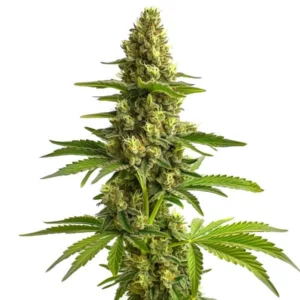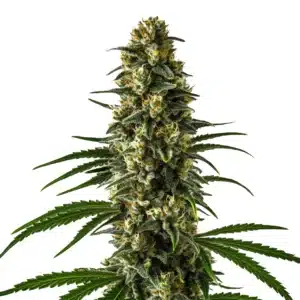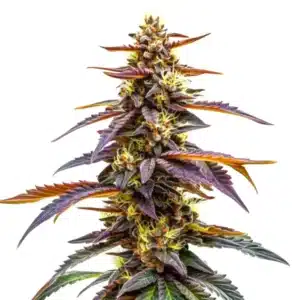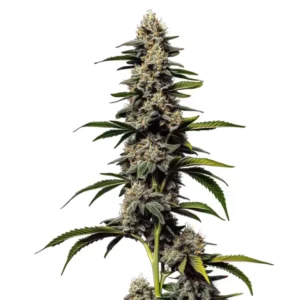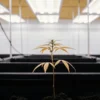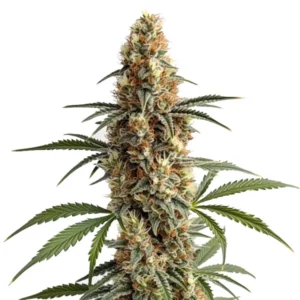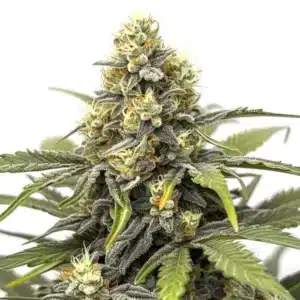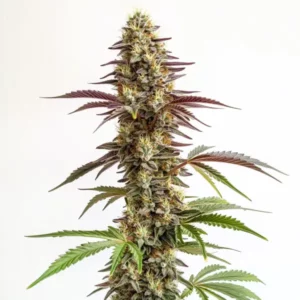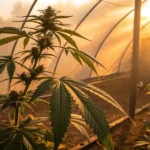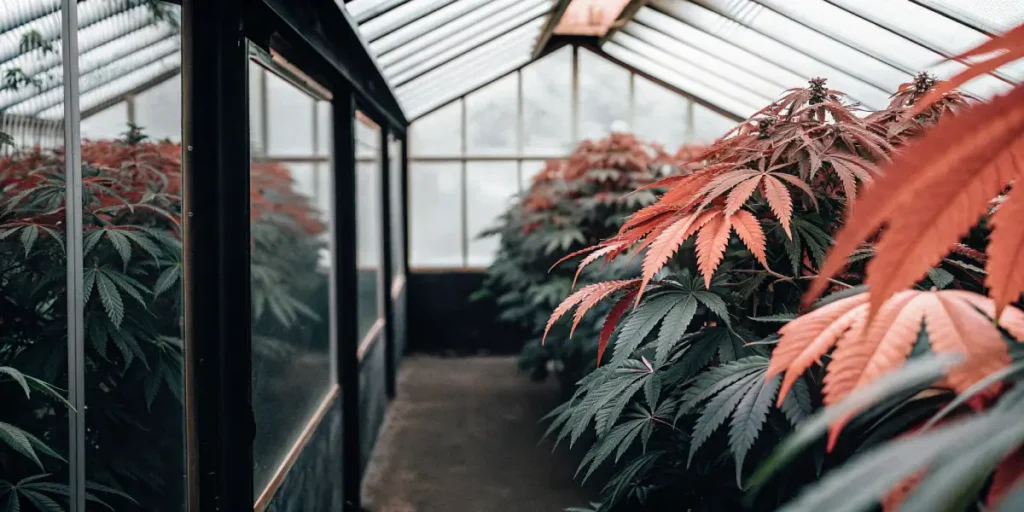
Oxidative Stress and Plant Aging in Cannabis
Cannabis cultivation is both an art and a science. As any grower knows, nurturing plants to their fullest potential requires knowing various biological processes. One such process is oxidative stress and its impact on plant aging in cannabis. This phenomenon can affect the plant’s health, yield, and potency.
Oxidative stress occurs when there’s an imbalance between free radicals and antioxidants. Free radicals are unstable molecules that can damage cells. In cannabis plants, this can accelerate aging, leading to reduced growth and lower yields. It’s essential for growers to manage this stress to ensure their plants thrive.
Recommended Strains
Bruce Banner #3
|
|
THC | 20% - 29% (High) |
|
|
Type | Feminized |
|
|
Yield | Medium |
|
|
Phenotype | 50% Indica / 50% Sativa |
Girl Scout Cookies
|
|
THC | 18% - 25% (Medium) |
|
|
Type | Feminized |
|
|
Yield | High |
|
|
Phenotype | 60% Indica / 40% Sativa |
Growers can mitigate oxidative stress by maintaining optimal growing conditions. This includes proper lighting, humidity, and nutrient levels. The right strains, like those from Blimburn Seeds, can also be more resilient to stress. Consider strains like Bruce Banner 3, Girl Scout Cookies, or Blue Dream.
Oxidative Stress Impact on Cannabis Aging
Oxidative stress can significantly impact cannabis aging. It speeds up the natural aging process, leading to premature senescence. This means leaves may yellow and fall off sooner than expected. Stunted growth and reduced flowering are also common.
To combat these effects, growers need to focus on antioxidant-rich environments. Antioxidants neutralize free radicals, reducing their harmful impact. For example, providing a balanced diet with essential nutrients can enhance a plant’s natural defenses.
Furthermore, the oxidative stress impact on cannabis aging can be mitigated by integrating specific cultural practices. Techniques such as pruning and training can help manage plant stress by ensuring that each part of the plant receives adequate light and airflow. These practices foster healthier growth and can delay aging.
Additionally, leveraging technology like automated environmental controls can be pivotal. Real-time monitoring of environmental conditions allows for quick adjustments, reducing oxidative stress levels. This proactive approach aids in maintaining a stable environment conducive to healthy aging.
Managing Nutrient Levels
Proper nutrition is crucial in managing oxidative stress in aging cannabis plants. Nutrients like nitrogen, phosphorus, and potassium are vital. They support healthy growth and improve the plant’s ability to fight off stressors.
Experiment with organic fertilizers to boost nutrient intake. Organic options often contain beneficial compounds that strengthen plant health. They can improve soil quality, leading to better water retention and root development.
Besides, supplementing with micronutrients such as magnesium and calcium can provide further support against oxidative stress. These elements play a role in photosynthesis and enzyme activation, further enhancing plant vitality.
Furthermore, the use of foliar sprays containing seaweed extracts or humic acids can bolster plant defenses. These sprays provide immediate nutrient uptake and can be particularly effective during critical growth phases, aiding in managing oxidative stress in aging cannabis plants.
Promos & Deals
Cannabis Plant Aging and Oxidative Stress Research
Recent research highlights the connection between cannabis plant aging and oxidative stress. Studies show that environmental factors like light intensity and temperature can exacerbate stress. Knowing these factors helps growers implement effective cultivation strategies.
Research also underscores the importance of plant genetics. Some strains are naturally more resistant to oxidative stress. For instance, Bruce Banner 3 from Blimburn Seeds is known for its robust growth and resilience.
Moreover, ongoing cannabis plant aging and oxidative stress research is exploring the role of plant biotechnology. Scientists are investigating genetic modifications that could enhance a plant’s natural antioxidant defenses, offering new avenues for stress mitigation.
Additionally, collaborations between researchers and growers are paving the way for more field trials. These trials aim to validate lab findings in real-world conditions, ensuring that scientific advances translate into practical benefits for the cannabis cultivation community.

Effects of Temperature and Light
Temperature and light play significant roles in oxidative stress mitigation in cannabis cultivation. High temperatures can increase stress levels, while appropriate light spectra can help manage it. Using LED lights with adjustable spectra can be beneficial.
Consider setting up a controlled environment where you can adjust these factors. A stable temperature and the right light schedule can prolong the lifespan of cannabis plants. This control allows growers to mimic ideal growing conditions, reducing stress.
Furthermore, the effects of oxidative stress on cannabis plant lifespan can be minimized by adopting light management strategies. Timely adjustments in light intensity and duration can mimic natural conditions, encouraging robust growth and development.
Temperature regulation is equally critical. Employing cooling systems or reflective materials can help maintain optimal temperatures, preventing heat-induced stress and promoting a balanced growing environment for healthier plants.
Managing Oxidative Stress in Aging Cannabis Plants
Managing oxidative stress involves several practical steps. First, ensure your cannabis plants receive adequate water. Overwatering or underwatering can increase stress levels. Consistent watering schedules help maintain plant health.
Introduce beneficial microorganisms to your soil. These microorganisms promote healthy root systems and improve nutrient uptake. They can also enhance soil structure, making it more conducive to plant growth.
Moreover, implementing crop rotation and companion planting can bolster plant resilience. These practices enhance soil biodiversity and can naturally reduce the incidence of pests and diseases, thereby mitigating oxidative stress in cannabis cultivation.
Furthermore, regular soil testing can provide insights into nutrient availability and pH levels, allowing for targeted amendments. This ensures that plants have access to the nutrients they need, further aiding in managing oxidative stress in aging cannabis plants.
Strain Selection
Choosing the right cannabis strain is crucial for minimizing oxidative stress. Strains like Girl Scout Cookies are known for their resilience and high yield potential. This makes them a great choice for both beginners and experienced growers.
Evaluate your growing conditions when selecting strains. Some strains are better suited for indoor environments, while others thrive outdoors. Knowing your environment helps in choosing the most suitable strain from Blimburn Seeds.
Additionally, exploring heirloom or landrace strains can offer unique advantages. These strains have adapted to specific climates over generations, potentially offering natural resistance to oxidative stress impacts on cannabis aging.
Furthermore, incorporating hybrid strains that combine traits from multiple genetics can produce plants that are more adaptable to varying conditions. This flexibility can be invaluable in managing oxidative stress in diverse cultivation settings.
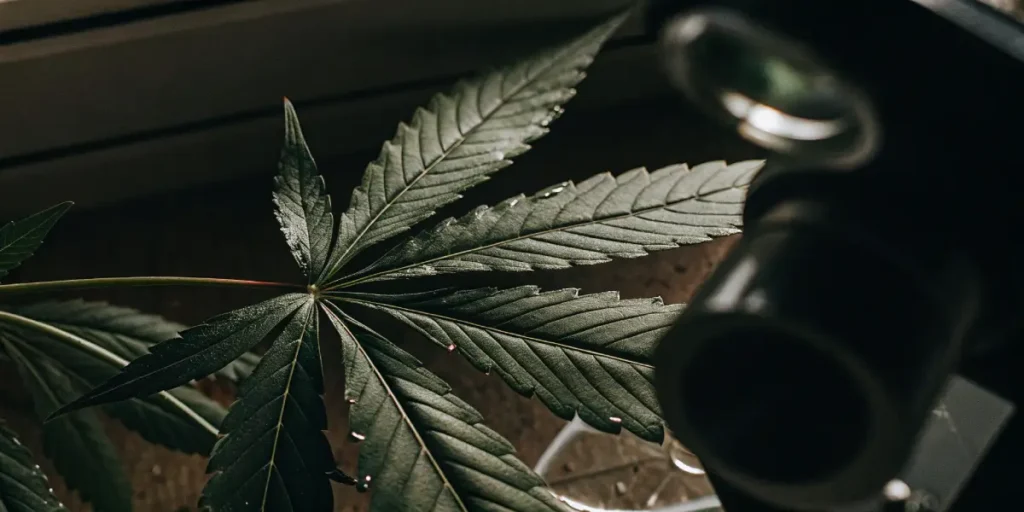
FAQs
What is oxidative stress and how does it affect cannabis?
Oxidative stress is an imbalance between free radicals and antioxidants in the plant cells. In cannabis, this stress can lead to accelerated aging, affecting growth and yield. Managing this stress is vital for healthy plant development.
By controlling environmental factors and ensuring proper nutrition, growers can reduce the adverse effects of oxidative stress. This involves providing adequate lighting, maintaining optimal temperature, and selecting resilient strains.
Knowing oxidative stress and plant aging in cannabis is essential for developing effective cultivation practices. Knowledge of the underlying mechanisms can guide interventions that enhance plant health and productivity.
Moreover, fostering a community of practice among growers can facilitate the exchange of insights and strategies. This collective knowledge base can drive innovation and improve outcomes in cannabis cultivation.
How can I mitigate oxidative stress in my cannabis plants?
To mitigate oxidative stress, focus on creating a balanced growing environment. Ensure your plants receive the right amount of water and nutrients. Use organic fertilizers to enhance soil quality and nutrient availability.
Consider using strains like Blue Dream from Blimburn Seeds, which are known for their stress resistance. Regularly monitor plant health and adjust your cultivation practices as needed.
Incorporating adaptive management techniques can also be beneficial. Observing plant responses and making adjustments in real-time can significantly minimize oxidative stress impacts on cannabis aging.
Furthermore, engaging in continuous learning through workshops or online courses can equip growers with the latest knowledge and tools. Staying informed about advancements in oxidative stress mitigation in cannabis cultivation can lead to improved practices and outcomes.
Are there specific strains that handle oxidative stress better?
Yes, certain strains have a better tolerance for oxidative stress. Strains like Bruce Banner and Girl Scout Cookies are known for their resilience and robust growth. These strains can handle stress better than others.
Choosing the right strain depends on your growing conditions. Indoor environments may favor different strains than outdoor setups. Consider your specific needs and experiment with different options from Blimburn Seeds.
Additionally, leveraging seed banks that specialize in stress-resistant varieties can provide access to a wider range of options. These banks often carry strains bred for specific conditions, enhancing the likelihood of success.
Moreover, collaborating with breeders can lead to the development of custom strains tailored to specific environmental challenges. This personalized approach can further reduce oxidative stress and optimize plant performance.
What environmental factors contribute to oxidative stress in cannabis plants?
Environmental factors like light intensity, temperature, and humidity can contribute to oxidative stress. Excessive light or high temperatures can increase stress levels, leading to premature aging.
To minimize these effects, maintain a stable growing environment. Use tools like thermostats and hygrometers to monitor and adjust conditions as needed. This proactive approach helps in keeping stress levels in check.
Furthermore, considering the effects of oxidative stress on cannabis plant lifespan, implementing shading or ventilation systems can mitigate extreme conditions. These systems help maintain an ideal microclimate for plant growth.
Additionally, knowing seasonal variations and planning cultivation cycles accordingly can reduce exposure to stressors. Timing your grows to avoid peak temperature or light intensity periods can be a strategic move in oxidative stress mitigation.
How does oxidative stress affect the lifespan of cannabis plants?
Oxidative stress can shorten the lifespan of cannabis plants by accelerating aging. This can lead to early leaf drop, reduced flowering, and ultimately lower yields. Managing stress is crucial for prolonging plant life.
By implementing effective cultivation strategies, growers can enhance plant resilience. This includes selecting the right strains, maintaining proper nutrient levels, and controlling environmental conditions. These efforts contribute to healthier, longer-living plants.
Moreover, integrating preventative measures such as the use of biostimulants can enhance a plant’s natural defenses. These substances can improve stress tolerance and promote longevity by supporting cellular health.
Additionally, regular maintenance practices such as pruning and disease management can prevent stress accumulation. By keeping plants healthy and stress-free, growers can extend the effects of oxidative stress mitigation in cannabis cultivation, resulting in a prolonged and productive plant lifespan.


